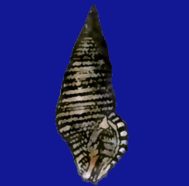In the previous blog I looked back at Tera as a person. In this blog some last loose ends and final thoughts on this project.
Tera was cremated in Middelburg a few days after her death. The ashes have been scattered, there is no grave. Her estate is more than a million guilders. Her nephews and niece donate part of the inheritance to the University of Amsterdam, where a Tera van Benthem Jutting fund is being set up. Female PhD candidates in biology can receive a scholarship from this fund. The fund still exists.
Villa De Wael becomes first a physiotherapy practice, later it becomes a luxury Bed & Breakfast.
In the 1960s, the Municipal University of Amsterdam became a State University with direct funding from the Ministry of Education and Science. With that, the collection of the Zoological Museum also became a national collection. At first there was separate funding for the museum, but with budget cuts in the 1980s, the museum had to be paid for from the budget of the biology department. That became increasingly difficult. In the end, it was decided to merge the collection of the Zoological Museum with the Natural History Museum in Leiden. After many negotiations, that happened in 2010. At Naturalis in Leiden, part of the collection that Tera brought together still can be studied. The buildings on Plantage Middenlaan where Tera spent her working life are now part of Artis and not accessible to the public. The Groote Museum of Artis has recently reopened.
After the independence of Indonesia in 1948, Lands’s Botanic Garden in Buitenzorg also came under Indonesian authority. Buitenzorg was renamed Bogor and the botanical garden is now called the Kebon Raya Bogor (Kebon = garden, Raya = large).
Writing about Tera has brought me a lot. Firstly, it gave me an insight into a family member, but also an insight into biology and the scientific world before the war. It was great to read the gossip and rather sharp personality descriptions in Tera’s diaries. Her grumbling in letters to her father and the wise advice that father then sends back. I’ve struggled at times with making public everything Tera writes. Her less subtle expressions, her talking down on the native population of the Indies, remarks about her superiors. My decision to publish them stems from the fact that Tera has chosen to hand over her diaries and letters to public archives. As a scientist, she must have known that there was a chance that letters or diaries could be used for publication, even if she did not consciously experience the Internet.
The first blog appeared on October 17, 2021. A blog has thereafter been published every week for the past 16 months, a total of 72 blogs. I lived intensively with Tera for the last 16 months. That’s how I got to know her very well, I think. I do wonder if she would think so too, but fortunately that is an unanswerable question.
Reactions came from expected and unexpected quarters. I had readers in Canada, the descendants of nephew Wouter, but also in Singapore and Finland and of course the Netherlands. I got tips on what else to read and research. I was “punished” if I wasn’t nice to Tera. That is also allowed. I had nice contacts with people from the Zeeland Society, such as Gerard Heerebout and Marianne Gossije. Tera’s assistant Siebrecht van der Spoel and Pico’s assistant Dick Dumont Tak were kind enough to talk with me. Members of the Malacological Association also read my blog with pleasure, such as Ruud Bank, Antonie van Peursen and Sylvia van Leeuwen. The people of the Zeeuws Archief where both the van der Feen archive and the archive of Benthem Jutting are located were very helpful. The city archive of Amsterdam was also helpful in making the archive of the Zoological Museum available. I want to thank all those people and everyone else that I am not mentioning here. I want to thank my niece Anne Veldhuis-Boot because she understands the technical side of having a website with a blog much better than I do. She built the website and came to the rescue when I got stuck.
A project like this is never completely finished. This is the last blog for now. However, I have since been put on the trail of new information. In 1978, Tera and Pico give an interview about their memories of Max Weber. I recently managed to locate those “Weber tapes”. I haven’t listened to them yet, but it could just lead to another blog. Guest blogs about Tera’s work and life, or related topics, are also welcome.
The website remains up and running. It would be nice if the website could be transferred at any time to an existing organization such as Naturalis, the Zeeuws Genootschap (KZGW), the Zeeuws archive, the University of Amsterdam or the Dutch Malacological Association. That way the information in this website will remain available in the future. If anyone has concrete ideas or wants to help me make that possible, I’d love to hear it. For now I would like to thank all my readers.
